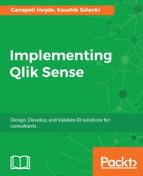Before we jump to reinsurance, let's quickly understand how does an insurance company earn. As mentioned in the previous example, where Mr. Brown purchased a motor insurance by paying a premium of 1,500 USD, so would there be several thousands of people who would buy policies for their vehicles.
For simplicity, let’s assume that 1000 people bought policies, each paying premium of 1,500 USD. So, the insurance company has effectively collected 1,500,000 USD (one and half million dollars). Out of 1000, let us assume 50 of them had accident/damage claims. Again, for example sake, if we take that the company paid 5,000 USD for each of these claims, the company spent 250,000 USD to pay for the claims. This means that the company made 1,250,000 USD (for simplicity, we aren’t counting the expenses incurred by the insurance company on sales/marketing/operations/employee and other costs). Insurance companies also do investments and increase the profitability.
In the preceding example, all looks well, doesn’t it? However, there could be a scenario wherein due to a natural calamity multiple vehicle get damaged. This situation can create chaos and have heavy financial implications for the insurance company. For example, say 200 vehicle engines got damaged due to floods, and if each of them claimed 10,000 USD towards repairs. In such case, the claims would run to 2,000,000 USD. This amount actually exceeds the total premium collected and leaves the insurance company with deficit of 500,000 USD.
This type of risk is detrimental to the fortunes of the insurance company. To mitigate this risk, the insurance companies (referred to a cedent), purchase insurance from a re-insurer. This insurance is termed as reinsurance. The following figure depicts this.

Let's look at the different types of reinsurance depicted via the previous figure:
- Facultative reinsurance is purchased by the insurance companies (cedent) for risks which are not covered or may not be sufficiently covered. This type of reinsurance covers risk for an individual policy issued or specific risk. The re-insurance company prices the contract depending on the risk they perceive, and this will be separate for each risk/individual.
- Treaty reinsurance means a type of coverage which is for a specified time period. This type of reinsurance does not take into account risk due to individual policy or specific risk. This reinsurance covers entire risk or only portion of risk during the specified period.
- Proportional: In this type of reinsurance, in event of claim the re-insurer receives on a agreed percent a proportional amount of premium earned by insurance companies. When paying claims, the reinsurer bears a proportional amount of the claim cost.
- Non Proportional: In this type of reinsurance, the re-insurer doesn't have a proportion of premium and claims. The reinsurance comes into force only when the insurance companies' losses go beyond a certain limit. The limit again depends on what agreement the re-insurer and the insurance company have in terms of risk covered.
